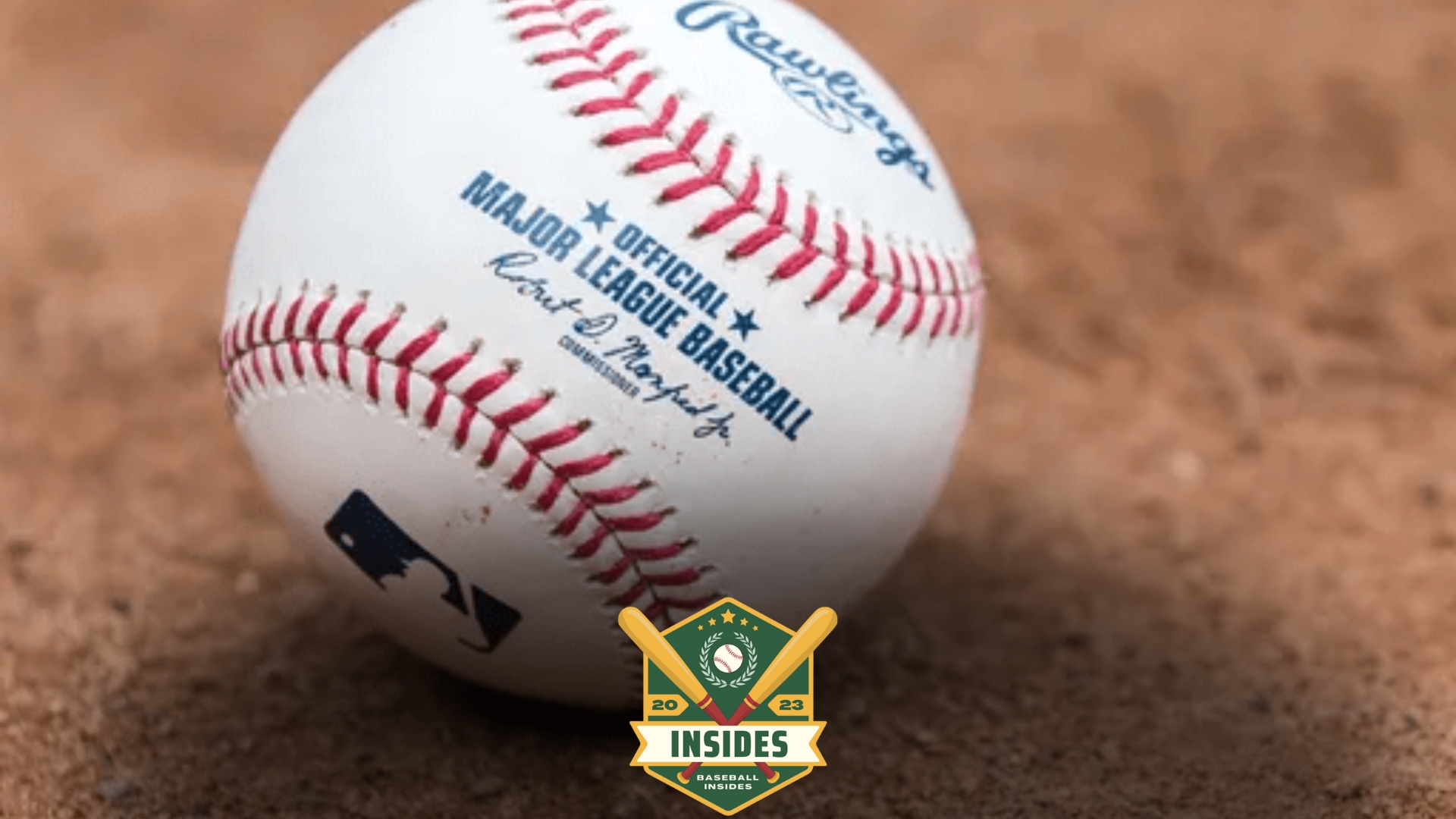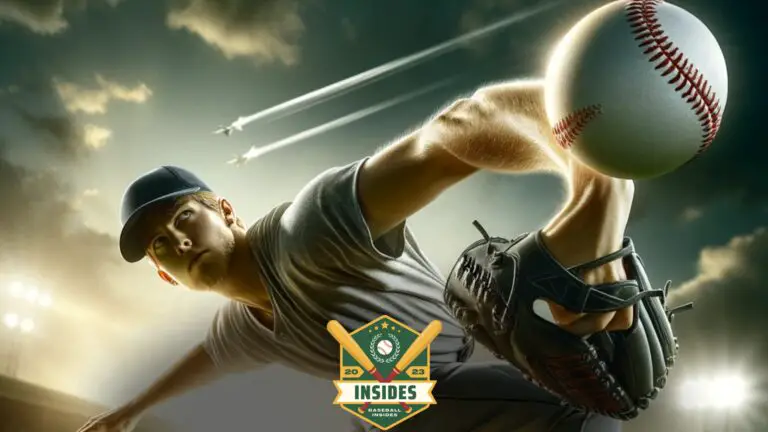
In this article:
Ever wonder about the intricacies of America’s favorite pastime? No, not the batting averages or the stolen base records, but the actual physical entity at the heart – the baseball.
Akin to the solar system with its planets circling the sun, the game of baseball revolves around this small, white orb.
Indeed, the humble baseball might seem simple, but it’s a marvel of design. Just one look at those red stitches weaving their way around the surface, and you’ll understand that there’s more to this sporting gear than meets the eye.
So, how many seams are actually on a baseball? The answer is 108. That’s right, and there are exactly 108 red, double stitches on a standard baseball. Now, let’s unravel the story behind this iconic number.
In the world of baseball, selecting the right equipment is crucial for performance, whether you’re a seasoned player or just starting out. For those curious about bat specifications, understanding “What Does Drop 8 Mean in Baseball Bats?” can help you choose a bat that enhances your swinging power and control.
This term refers to the difference between the length and weight of the bat, a crucial factor for those aiming to optimize their game.
The History Behind the Number of Seams on a Baseball
When thinking about a baseball, one of the last things that may cross your mind is its number of seams.
Yet, this small detail is deeply intertwined with the history and evolution of the sport itself. It’s a story worth telling, so let’s dive in!
The Origin of the Stitch
The first baseballs, dating back to the mid-19th century, were quite different from what we know today. They were smaller, softer, and lacked the distinctive red stitch.
It was not until 1857 that the figure-eight stitching pattern was introduced, giving birth to the classic baseball look.
How Many Seams Are on a Baseball?
The modern baseball has exactly 108 double stitches, or 216 individual stitches if you prefer. This number is not arbitrary but has been standardized to ensure uniformity in the game.
The stitches are hand-sewn using a red thread, contributing to the iconic appearance of a baseball.
Why Are the Seams Important?
The seams on the baseball are not just for aesthetics; they play a crucial role in how the ball moves in the air. They cause the ball to have an “unpredictable” flight path, which adds to the game’s strategic elements.
The seams’ height, depth, and tightness can even influence a pitcher’s grip and the type of pitches they can throw.
The Evolution of the Baseball Seam
Over time, the design of the baseball has undergone several changes, including the seams. For instance, in the early 20th century, baseball adopted the “raised-seam” design, which is still used in many amateur leagues today.
In contrast, Major League Baseball uses a “low-seam” design, where the stitches are tighter and less pronounced, resulting in a ball that travels farther when hit.
So, the next time you watch a baseball game or hold a baseball in your hand, take a moment to appreciate those 108 double stitches.
They are a testament to the history, evolution, and intricacies of the beautiful game that is baseball.
Maintaining your equipment is just as important as selecting the right pieces. A common question among players is, “Can You Put a Baseball Glove in the Dryer?”
Knowing the proper care techniques ensures your glove remains in top condition, ready for every catch and play. It’s essential to follow the best practices for drying to avoid damaging this critical piece of your gear.
How Many Seams Are on a Standard Baseball?
Ever held a baseball in your hand and wondered, “How many seams are there on this thing?” Well, you’re not alone. It’s a question that can stump even the most ardent baseball fans.
The answer, my friend, is not as straightforward as you might think. The number of seams on a baseball can vary depending on the type of stitch used.
But, for a standard Major League Baseball, we’re talking about 108 double stitches or 216 individual stitches if you prefer.
Now, you might be thinking, “Why so many?” Good question. The seams play a crucial role in the game.
They influence the ball’s trajectory, speed, and stability when pitched. How the pitcher grips the seams affects a pitch’s spin and movement.
But let’s not stop there. Let’s delve a bit deeper into the anatomy of a baseball.
The Anatomy of a Baseball
A baseball is made up of multiple layers. The core, often referred to as “the pill,” consists of a small, round cork wrapped in two layers of rubber. This core is then wrapped in nearly 150 yards of wool yarn.
The baseball’s cover, made of white cowhide or horsehide, is stitched together with the previously mentioned 108 double stitches of red cotton thread.
This double-stitched design holds the cover securely over the core and creates the raised seams that are essential for pitching.
So there you have it. The next time someone asks, “How many seams are on a baseball?” you’ll be well-equipped to provide the answer.
And not just the number of seams – you can also enlighten them about the fascinating anatomy of a baseball. A conversation starter, indeed!
Why Does a Baseball Have Exactly 108 Stitches?
Have you ever looked closely at a baseball and counted the stitches? Bet you didn’t know that a standard baseball has exactly 108 stitches!
Now, you might be wondering why that specific number. Well, it’s not as random as it may seem.
The Historical Significance
Many attribute the 108 stitches to the baseball’s historical roots. The number 108 has long been considered sacred in many cultures. It’s intriguing how history, culture, and sports can intersect.
The Practical Perspective
From a more practical perspective, 108 stitches provide the perfect balance. It’s the ideal number to ensure the baseball has the right bounce and grip. Too few or too many stitches could drastically alter the game’s dynamics.
How the Stitches Impact the Game
The stitches on a baseball aren’t just for show. They have a significant impact on how the ball moves when thrown.
The stitches create air resistance, which helps the pitcher throw various pitches like curveballs or fastballs.
So next time you watch a baseball game, remember that each of those 108 stitches plays a vital role!
The Differences Between Balls With Raised and Flat Seams
So, what sets baseballs with raised seams apart from those with flat seams? Let’s dive into the world of baseball and dig a little deeper.
Raised Seam Baseballs
When you think of a classic baseball, you’re probably picturing a ball with raised seams. These types of balls are used at the high school level and below.
The raised seams provide a better grip, allowing pitchers to throw a wider variety of pitches with more control. They also create more air resistance, affecting the ball’s trajectory and speed.
Flat Seam Baseballs
In contrast, flat-seam baseballs are typically used in professional leagues. The seams are less pronounced, creating a slicker surface.
This makes them harder to grip and control. However, these balls tend to travel farther as they encounter less air resistance.
You might be asking, “What does this mean for the overall game?” Well, the difference in seams can significantly impact a player’s performance and the game’s overall strategy.
The Impact on the Game
Pitchers using raised seam baseballs can use the enhanced grip to throw more precise and varied pitches.
On the other hand, batters facing flat seam balls may have to adjust their timing due to the quicker and farther traveling pitches.
So, next time you watch or play a baseball game, remember that the type of ball – raised or flat seam – can make a difference!
Conclusion
When you hold a baseball in your hand, it might just seem like a simple piece of sports equipment. But the truth is every tiny detail of a baseball, right down to the seams, plays a critical role in the game.
It’s quite fascinating to appreciate the complexity and finesse that goes into designing something that appears so simple at first glance.
Take the seams, for instance. A baseball has 108 double stitches or, you could say, 216 individual stitches. These aren’t just for decoration but greatly affect the ball’s trajectory, speed, and spin during a game.
These subtle aspects give each pitch its unique character, making baseball the exciting sport it is.
So, next time you watch a baseball game or play one, take a moment to appreciate the magic that these 108 double stitches bring to the table. Remember, in baseball, the devil is truly in the details.
FAQs
How Many Seams Are Present on a Baseball?
A baseball has 108 double stitches, sometimes called seams, running along its circumference. These are stitched by hand using red thread.
Why Does a Baseball Have Seams?
Seams on a baseball are not just for aesthetic appeal; they have a functional purpose. They help pitchers grip the ball better, enabling them to throw various pitches.
Does the Seam Height Vary?
Yes, the height of baseball seams can vary. Lower seams are typically found on balls used for professional games, while higher seams are more common on balls used for practice and in amateur leagues.
What is the Material Used for Baseball Seams?
The seams of a baseball are typically made from red cotton thread. This thread is sturdy and can withstand the high-speed impacts that occur during a game.
How Are the Seams of a Baseball Stitched?
Each baseball is hand-stitched, typically in a factory setting. The process is meticulous and requires a high degree of skill and precision.
Does the Number of Seams on a Baseball Affect its Flight?
Interestingly, the number of seams can influence the ball’s flight. More seams can create more drag on the ball, affecting its speed and trajectory.
Can a Baseball’s Seams Be Replaced?
Once the seams of a baseball have worn out, they cannot be replaced. This is typically when a new baseball is introduced into the game.
Are There Different Stitching Patterns?
While the number of stitches on a baseball remains standard, the stitching pattern may vary slightly, especially in non-professional leagues and practice balls.
What’s the Lifespan of a Baseball Seam?
A baseball’s seams can last for several games, but their lifespan depends largely on the intensity of play. They tend to wear out faster in professional games.
Who Invented the Current Baseball Seam Design?
The current design of baseball seams is attributed to the Spalding company in the early 20th century, which standardized the figure-8 stitching pattern.






